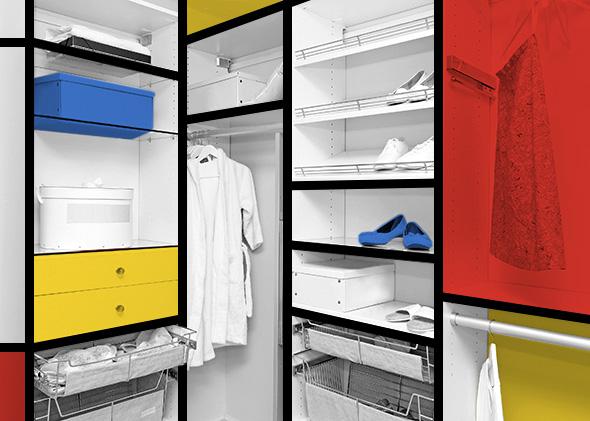Historically, spring cleaning was all about surfaces, focused on lifting the layer of grime and dirt that had built up on walls and linens and furniture over the course of the sooty, cloistered winter months. But given that seasonal filth accumulation is no longer a serious issue (in modern houses, anyway), I suggest that we reorient our initial efforts toward another, less exposed part of the house: Best to start by cleaning the unseen.
I’m talking, of course, about closets and wardrobes, cabinets and cubbies—the secret places where it’s all too easy to let mess molder unattended, out of sight and mind. It’s not that spring cleaners of old didn’t address these areas as well; they most certainly did. But then, those fine people needed little incentive beyond basic habitability to take on the whole project in general. We spoiled moderns require more coddling, a quickly gratifying entrée into spring cleaning that will get us buzzing with that “feeling of renewal” that Cheryl Mendelson attributes to the ritual. And in my experience nothing is more viscerally satisfying and emboldening than a tamed closet.
I’ll get to why this may be in a moment, but first, a few pointers. Obviously, you’ll want to take everything out of your chosen cavern and sort through the pile for things to discard and donate, keeping only those items that you have actually used in recent memory. It’s the putting back that’s more involved. You will want to dust, wipe, and/or vacuum the insides of the space from top to bottom first—though they may be separated from the rest of your home by doors, closets and similar areas tend to be far dirtier than you might imagine as they are often overlooked during regular routines.
After that’s done, consider how your space is structured. It’s shocking how much storage space can be lost in even a good-sized closet that has not been smartly apportioned. This doesn’t mean, though, that you need to invest in an expensive custom shelving system. In my own apartment, we have one large living room closet that must house items ranging from paint cans to park blankets, and for years it felt consistently a-jumble. Then, we realized that a simple lacquered table we already had fit nicely in the closet, and once installed, the creation of a broad surface at waist level revolutionized the functionality of the entire space—paint cans now live neatly stacked beneath, and items more frequently called upon (cat litter, a set of weights) rest on top.
Another surprisingly powerful fix—that’s often considered purely ornamental—is an attractive layer of carefully measured shelf and drawer-liner. You want something with a light adhesive; too sticky and you’ll end up hating yourself when you need to remove it, adhesive-free and you’ll quickly find that it tends to bunch up, making the area look worse. And don’t be afraid of bolder patterns: We recently installed a Pop-ish gray chevron number in all the interiors of our kitchen and living room, and now, opening a cabinet or drawer comes with a lovely burst of visual stimulation. Plus, because these previously unremarkable spaces have some aesthetic appeal of their own, I’ve found myself much more likely to keep them neat and organized—it just doesn’t feel right to close the door on a mess anymore.
And though this truth often goes unacknowledged, feelings—about the state of our homes, but also about ourselves—are a huge part of cleaning. Mendelson writes that “people who think badly of themselves take these feelings out on their homes.” Houses can’t complain, but they do have a way of reflecting emotional energy back at their occupants. Think about that as you add items back to your newly appreciated storage spaces—how do you feel now that you’ve made sense of previously neglected corners of your home? I find that precisely because closets and cabinets are mostly hidden and easily ignored, tackling them this time of year feels more refreshing and productive than any other spring cleaning task. It’s like finally working through an old emotional wound that you’ve been putting off for years: It can be difficult and stressful as you finally deal with the mess, but when you’ve sorted it out, you can close that chapter and move on.
In cleaning—as in life—we often focus on the most obvious, superficial issues first. But there’s something to be said for working from the inside out: A pretty exterior has trouble lasting very long if the insides aren’t being cared for as well.
Up Next: How not to hoard.
